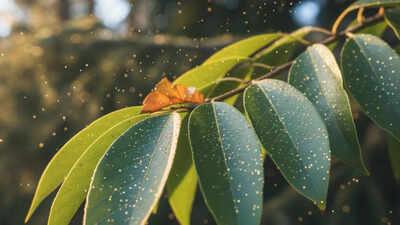Gold may not literally grow on trees, but a groundbreaking study from Finland suggests that nature may come close. Researchers investigating Norway spruce trees in northern Finland found tiny gold nanoparticles inside tree needles. Surprisingly, these particles appear to form with the help of microbes living inside the needles. The study, conducted by the University of Oulu and the Geological Survey of Finland, shows that specific bacteria may transform soluble gold from the soil into solid particles within the needles. This discovery opens new possibilities for greener, plant-based gold exploration and highlights how microbes quietly shape geochemistry in ways science is just beginning to understand.
How microbes and trees work together to make gold
Norway spruce trees host a variety of microbes that influence chemical reactions inside their leaves and needles. DNA sequencing revealed that certain bacterial groups, such as P3OB-42, Cutibacterium, and Corynebacterium, were more common in needles containing gold nanoparticles. These microbes live in sticky biofilms, creating microenvironments that can precipitate dissolved gold into solid nanosized particles, effectively “locking” it inside the needle.Gold in the soil moves in a soluble form through water, entering plant roots and traveling upward to leaves and needles. Once inside, the microenvironments shaped by microbial biofilms encourage gold to settle as solid particles. Not every tree contained gold, highlighting that water pathways, needle microbiomes, and local conditions all play a role in the process.
Implications for greener gold exploration
Traditionally, gold exploration relies on drilling and geochemical surveys. Understanding which microbes correlate with gold presence could help scientists develop plant-based screening methods, reducing blind drilling and environmental impact. By mapping microbial fingerprints in plant tissues, researchers may improve the efficiency and sustainability of mineral exploration.The same microbe-driven processes in plants could be used to recover metals from water in mining-impacted regions. Aquatic plants and mosses, for example, could precipitate metals into harmless solid forms, offering potential solutions for water purification and environmental remediation.
The future of plant-microbe geochemistry
While the findings are preliminary, they suggest that microbes inside trees may hold the key to understanding how minerals accumulate in nature. Future studies will aim to replicate these transformations under controlled conditions, track seasonal and groundwater influences, and expand research to other plants and mineral deposits. The humble spruce needle may prove to be a tiny but powerful laboratory for unlocking nature’s hidden alchemy.


